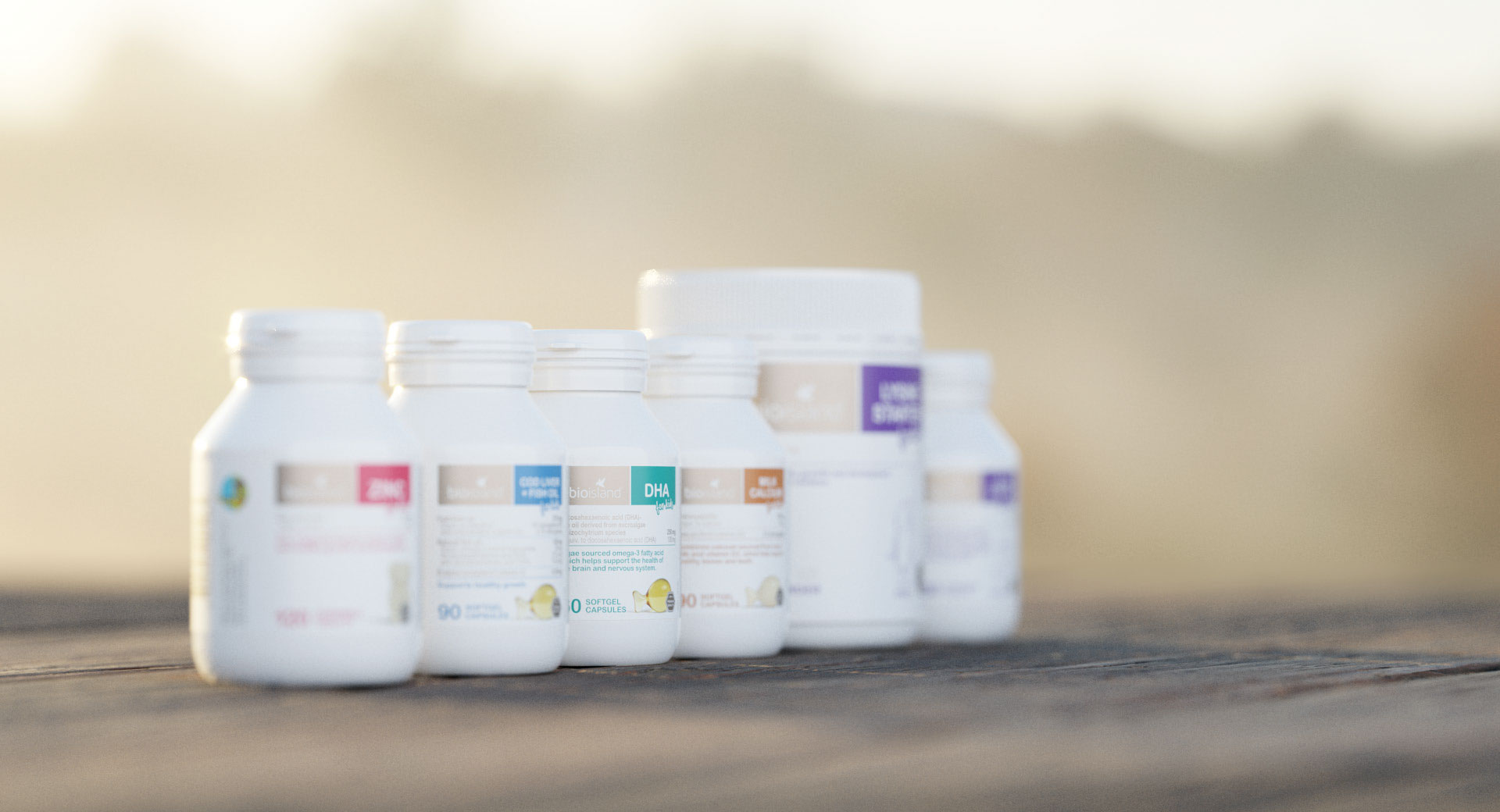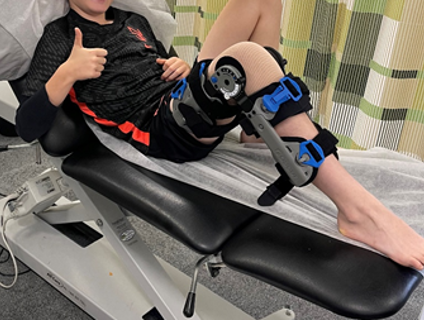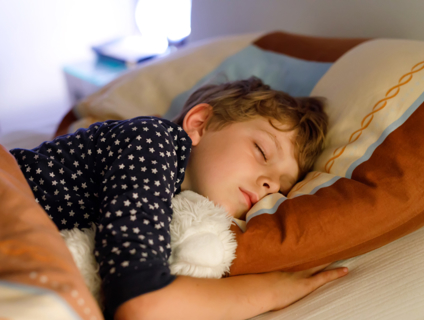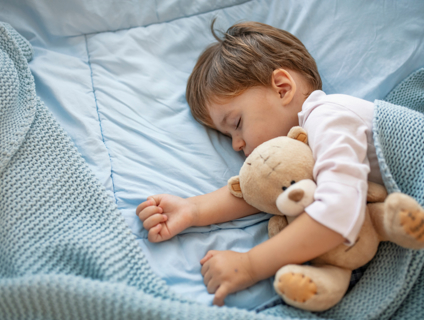
Sleep, Physical Activity and Screen Time for Kids
Article written by Maree Cassimatis, Accredited Exercise Physiologist and PhD Candidate, at The Children’s Hospital at Westmead.
Sleep and physical activity play a critical role in the social, physical, mental and emotional wellbeing of a child’s development. In this article, clinicians at the Children’s Hospital Institute of Sports Medicine (CHISM) within The Children’s Hospital at Westmead discuss the important effects of sleep, physical activity and screen time for children of all age groups (0 to 17 years).
Sleep
Sleep is essential for rest and recovery, and for optimal daily functioning. Gaining proper sleep has been shown to improve cognition, school performance, as well as, psychological and social wellbeing. On the other hand, poor sleeping patterns have been associated with negative health outcomes, including mood disruption, irritability, and even weight gain.
If your child has difficulty getting to sleep or staying asleep, there are certain behaviours they can engage in to help improve their sleeping patterns. This is known as sleep hygiene. The pictorial below shows the key behaviours involved with good sleep hygiene.
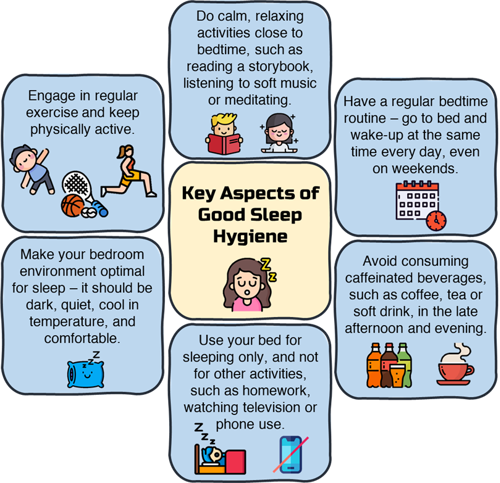
Physical Activity
Engaging in physical activity on a regular basis has immense benefits for children and adolescents, and should be encouraged regardless of age, gender, ethnicity, current fitness levels or exercise capacity. Exercise and energetic play are advised for children in all age groups. For 5-17 year olds, engaging in strength-based activity also becomes a priority for optimal bone and muscle development. Some of the valuable benefits of exercise and physical activity are listed below.
Emotional and intellectual benefits:
- Improves self-esteem and confidence.
- Enhances concentration.
- Helps manage stress and anxiety.
- Improves academic performance, including better learning, memory, attention management, and processing speed.
Health benefits:
- Promotes healthy growth and development.
- Builds strong muscles and bones.
- Improves physical fitness, including coordination and movement skills.
- Reduces the risk of disease and unhealthy weight gain.
Screen Time
Technology and the use of screens, such as mobile phones, computers, iPads, and television, have become a pivotal and ingrained part of today’s modern society. The advancements in technology have made screen time a readily accessible tool for online learning, leisure time and entertainment.
However, there have been growing concerns about the health impacts of screen time in children and young people. A growing body of evidence suggests that higher levels of screen time is linked with obesity, unhealthy dietary patterns, poorer mental health and lower quality of life in youth. Therefore, national guidelines have been created on the amount of recreational screen time use in children of different age groups. These can be viewed in the table summary below.
Table summary of physical activity, screen time and sleep recommendations for children based on age group
|
Age Group |
Physical Activity |
Sedentary Recreational Screen Time |
Sleep |
|
Under 12 months |
Interactive floor-based play, and at least 30 minutes of tummy time for babies per day. |
None. |
0 to 3 months:
4 to 11 months:
This includes naps. |
|
1 to 2 years |
At least 3 hours of energetic play per day. |
Under 2 years: None.
2 years: No more than 1 hour per day. |
11 to 14 hours, including naps. |
|
3 to 5 years |
At least 3 hours per day, with 1 hour being energetic play. |
No more than 1 hour per day. |
10 to 13 hours. Some will still need naps. |
|
5 to 17 years |
At least 1 hour of moderate to vigorous activity involving mainly aerobic activities per day. Vigorous activities should be incorporated at least 3 days per week. Several hours of light activities per day. Strengthening exercises should be performed at least 3 days per week. |
No more than 2 hours per day. |
5 to 13 years:
14 to 17 years: |
Source: This table has been adapted from the Australian Government Department of Health Physical Activity and Exercise Guidelines for children (https://www.health.gov.au/health-topics/physical-activity-and-exercise/physical-activity-and-exercise-guidelines-for-all-australians).
Thank you Bio Island
Continued research into the physical activity and the benefits it can have in childhood development, wouldn’t have been made possible without the support of Bio Island. Bio Island, through partnership with Sydney Children’s Hospitals Foundation, has supported the CHISM team within The Children’s Hospital at Westmead in undertaking vital research to improve the health and wellbeing of all kids. You can learn more about Sydney Children’s Hospitals Foundation here.
|
Article written by Maree Cassimatis Accredited Exercise Physiologist and PhD Candidate Children’s Hospital Institute of Sports Medicine (CHISM) at The Children’s Hospital at Westmead (CHW) |
